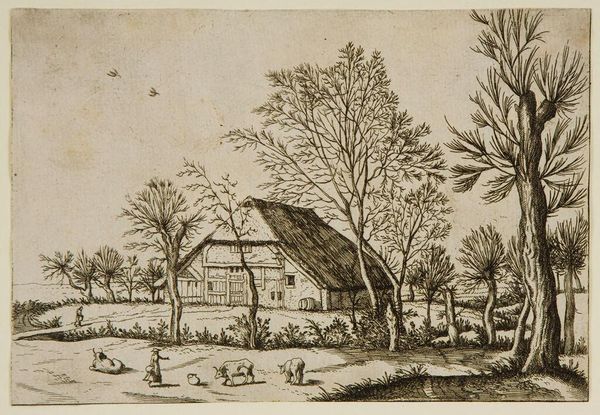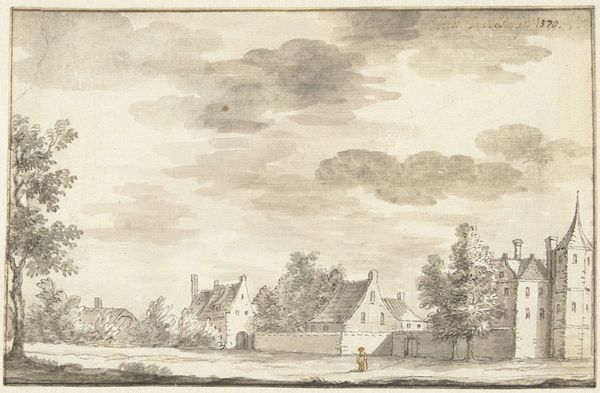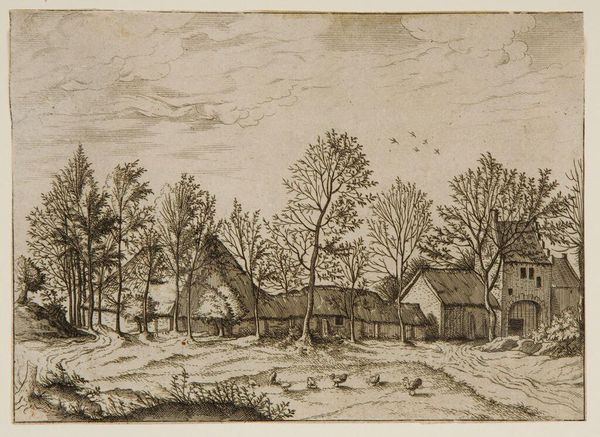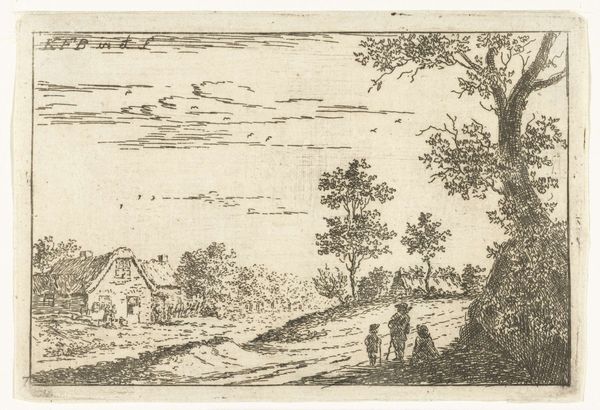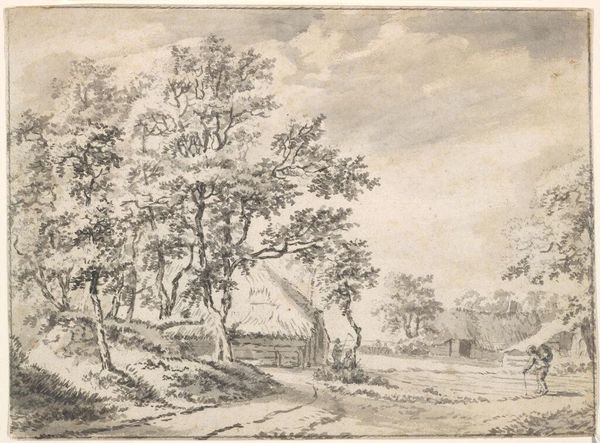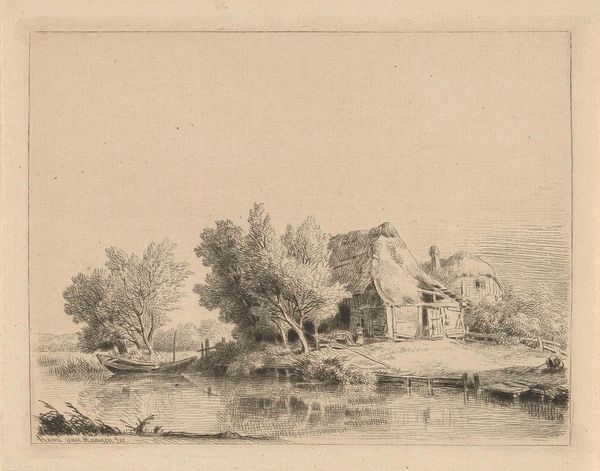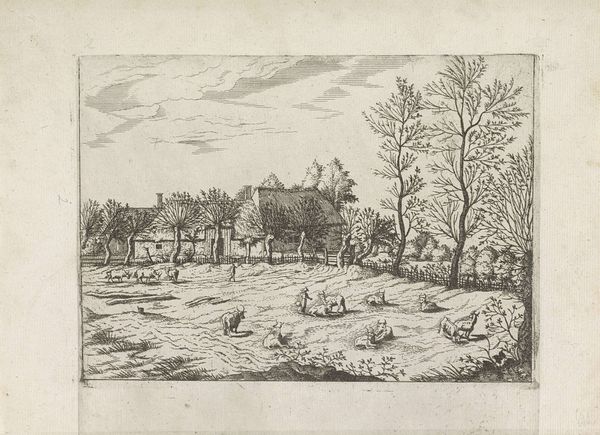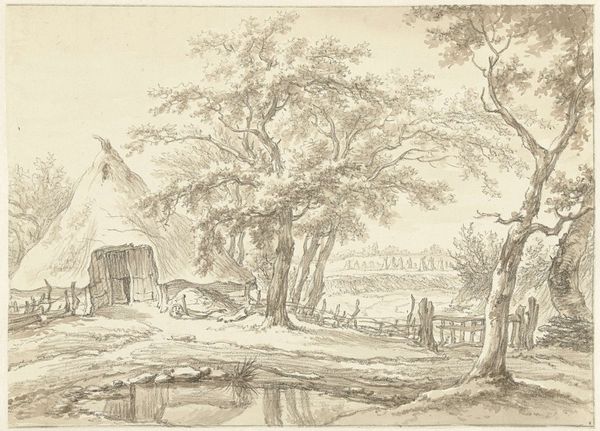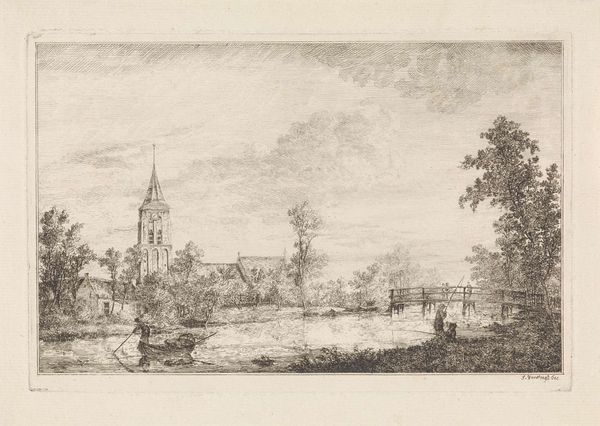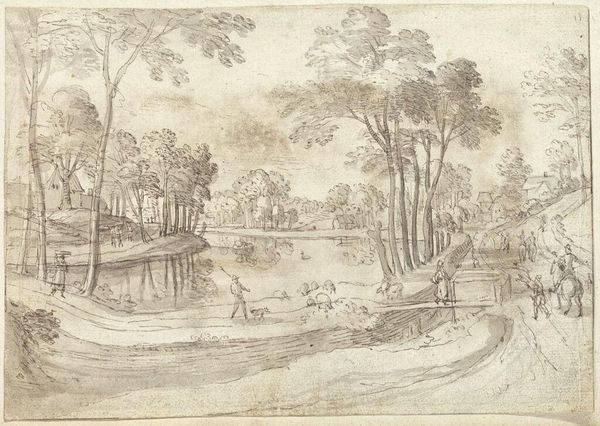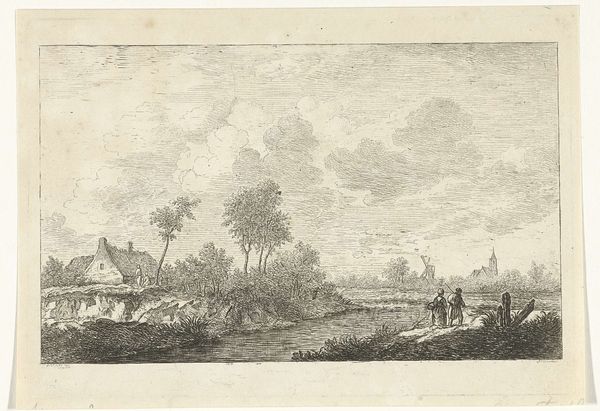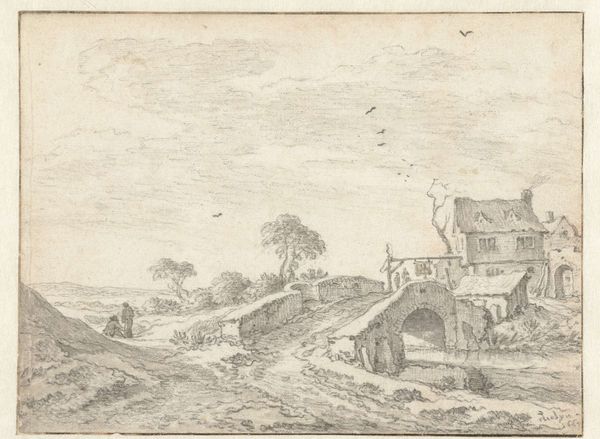
drawing, paper, ink
#
drawing
#
dutch-golden-age
#
landscape
#
paper
#
ink
Dimensions: height 106 mm, width 161 mm
Copyright: Rijks Museum: Open Domain
Editor: This is "Road between Watercourses in a Polder Landscape," a drawing in ink on paper by Claes Jansz. Visscher, made around 1615 to 1620. The landscape feels so... expansive, even though it’s a pretty small drawing. I’m drawn to the little figures, and the water. What stands out to you? Curator: I immediately notice the overt depiction of the Polder, that quintessential feat of Dutch engineering! And look closely at how Visscher utilizes the ink – the density varies across the paper, revealing a sophisticated understanding of materiality. Do you see how this reflects the larger economic picture of the time? Editor: I see what you mean. The varying ink density almost feels like different layers of labor and how people harnessed these waterways. How would you connect the Dutch Golden Age context with this emphasis on materiality? Curator: Exactly! The Dutch Golden Age was built on trade, shipping, land reclamation - tangible, material processes. This drawing foregrounds the landscape *as* infrastructure. It reminds us that even representations of nature are deeply interwoven with human labor and material transformation. Editor: That makes so much sense! So, it’s not just a pretty landscape, but a commentary on the society and its foundation? The making of the art reflects the making of the country. Curator: Precisely. Think about the availability of paper, the process of ink production, the economics of art patronage, the labor to create this: all linked together and to a specific society at a specific point in its history. How do we consume the land, make marks of ink, make and commodify artistic works? Editor: I never thought of it that way before. Looking at art through this lens, everything becomes a network of materials and actions! Curator: Indeed. Art then is inextricably linked to production and material and consumption. It highlights connections that invite our scrutiny of materials and methods. Editor: This definitely encourages a new understanding, especially when considering art's creation within social, economic and historical currents!
Comments
No comments
Be the first to comment and join the conversation on the ultimate creative platform.
